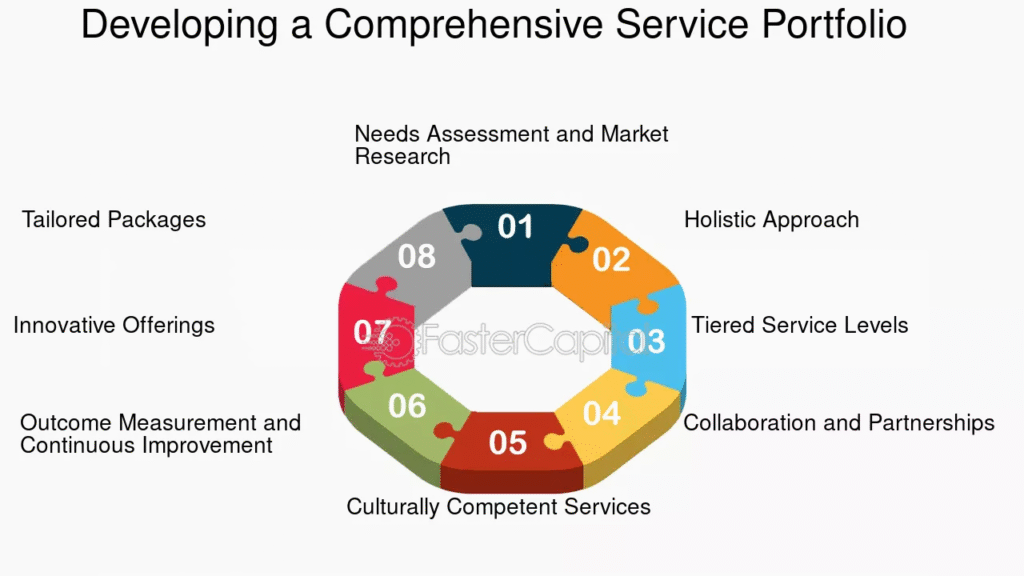In today’s rapidly evolving digital landscape, enterprises need robust, flexible platforms that can seamlessly integrate data, applications, and emerging technologies like artificial intelligence. The SAP Business Technology Platform (BTP) emerges as a comprehensive solution designed to address these complex business requirements while accelerating digital transformation initiatives across organizations of all sizes.
Understanding SAP Business Technology Platform: The Foundation of Modern Enterprise

The SAP Business Technology Platform represents a paradigm shift in how organizations approach technology integration and business process optimization. At its core, SAP BTP is a multi-cloud Platform-as-a-Service (PaaS) offering that serves as the technological backbone for intelligent enterprises. Unlike traditional platforms that focus on singular functionalities, the SAP Business Technology Platform provides a unified environment where data analytics, artificial intelligence, application development, automation, and integration capabilities converge to create unprecedented business value.
This innovative platform empowers organizations to break down data silos, streamline operations, and harness the power of real-time insights to make informed strategic decisions. By leveraging the SAP Business Technology Platform, companies can transform raw data into actionable intelligence while maintaining the flexibility to adapt to changing market conditions and customer demands.
Core Architecture and Technical Components
The SAP Business Technology Platform operates on a sophisticated multi-layered architecture that ensures scalability, security, and performance. The platform encompasses three primary runtime environments: Cloud Foundry, ABAP, and Kyma, each designed to serve specific development and deployment scenarios.
Cloud Foundry provides a cloud-native development environment that supports multiple programming languages and frameworks, enabling developers to build modern applications with microservices architecture. The ABAP environment maintains compatibility with existing SAP applications while providing enhanced cloud capabilities. Kyma, the newest addition to the platform, offers a Kubernetes-based environment for serverless computing and event-driven architectures.
The platform’s data management layer incorporates advanced analytics engines, machine learning capabilities, and real-time processing tools that can handle massive datasets from diverse sources. This comprehensive approach ensures that the SAP Business Technology Platform can accommodate everything from simple data visualization tasks to complex predictive analytics workflows.
Key Capabilities and Service Portfolio

Data and Analytics Excellence
The SAP Business Technology Platform excels in transforming disparate data sources into cohesive, actionable insights. The platform’s analytics capabilities extend far beyond traditional reporting, incorporating advanced features such as predictive modeling, machine learning algorithms, and real-time data streaming. Organizations can leverage these tools to identify trends, predict customer behavior, and optimize operational efficiency.
The platform’s data integration services enable seamless connectivity between on-premises systems, cloud applications, and third-party solutions. This comprehensive integration approach ensures that businesses can maintain data consistency while enabling cross-functional collaboration and decision-making.
Application Development and Innovation
Modern application development requires agility, scalability, and rapid deployment capabilities. The SAP Business Technology Platform addresses these needs through SAP Build, a low-code/no-code development environment that democratizes application creation. Business users can now develop custom applications without extensive programming knowledge, while professional developers benefit from advanced tools and frameworks that accelerate the development lifecycle.
The platform supports various development methodologies, from traditional waterfall approaches to modern DevOps practices. Continuous integration and deployment capabilities ensure that applications can be updated and maintained efficiently, reducing time-to-market for new business solutions.
Artificial Intelligence and Machine Learning Integration
Artificial intelligence represents a cornerstone of the SAP Business Technology Platform‘s value proposition. The platform integrates AI capabilities throughout its service portfolio, enabling organizations to embed intelligent functionality into their business processes. From natural language processing for customer service applications to computer vision for quality control systems, the platform provides the tools necessary to implement AI-driven solutions.
Machine learning services within the platform can analyze historical data patterns, identify anomalies, and provide predictive insights that enable proactive decision-making. These capabilities are particularly valuable for industries such as manufacturing, retail, and financial services, where predictive analytics can significantly impact operational efficiency and customer satisfaction.
Business Benefits and Strategic Advantages

Accelerated Digital Transformation
The SAP Business Technology Platform serves as a catalyst for digital transformation initiatives by providing a unified foundation for modernizing business processes. Organizations can migrate legacy systems to cloud environments while maintaining operational continuity and data integrity. This approach reduces the risks associated with large-scale system overhauls while enabling gradual adoption of modern technologies.
The platform’s integration capabilities ensure that digital transformation efforts don’t create additional data silos or operational complexities. Instead, organizations can achieve seamless connectivity between existing systems and new cloud-based solutions, creating a cohesive technology ecosystem that supports long-term growth objectives.
Enhanced Operational Efficiency
By centralizing data management, application development, and analytics capabilities, the SAP Business Technology Platform eliminates redundancies and streamlines IT operations. Organizations can reduce the complexity of managing multiple vendor solutions while benefiting from standardized security, compliance, and governance frameworks.
The platform’s automation capabilities extend beyond simple task automation to include intelligent process optimization. Machine learning algorithms can identify bottlenecks, suggest improvements, and automatically adjust system configurations to maintain optimal performance levels.
Improved Decision-Making Capabilities
Real-time data access and advanced analytics capabilities enable organizations to make informed decisions based on current market conditions and operational metrics. The SAP Business Technology Platform provides executives and operational managers with comprehensive dashboards and reporting tools that present complex data in easily digestible formats.
Predictive analytics capabilities allow organizations to anticipate market trends, customer needs, and potential operational challenges. This proactive approach to business management can result in significant competitive advantages and improved financial performance.
Implementation Strategies and Best Practices

Planning and Assessment Phase
Successful implementation of the SAP Business Technology Platform begins with comprehensive planning and assessment activities. Organizations should conduct thorough evaluations of existing systems, data sources, and business processes to identify integration points and potential challenges. This assessment phase should also include stakeholder interviews and requirements gathering to ensure that the platform implementation aligns with business objectives.
Change management considerations are crucial during this phase, as the platform may require modifications to existing workflows and user responsibilities. Organizations should develop comprehensive training programs and communication strategies to ensure smooth adoption across all user groups.
Phased Implementation Approach
Rather than attempting to implement all platform capabilities simultaneously, organizations should adopt a phased approach that prioritizes high-impact use cases and gradually expands functionality over time. This strategy reduces implementation risks while allowing teams to gain experience with the platform before tackling more complex scenarios.
Each implementation phase should include clear success metrics and evaluation criteria to ensure that the platform is delivering expected business value. Regular assessments and adjustments help optimize platform utilization and identify opportunities for additional functionality deployment.
Future Outlook and Industry Trends

The SAP Business Technology Platform continues to evolve in response to emerging technology trends and changing business requirements. Recent developments include enhanced AI capabilities, improved integration with third-party cloud services, and expanded support for edge computing scenarios.
As organizations increasingly adopt hybrid and multi-cloud strategies, the platform’s ability to provide consistent functionality across diverse infrastructure environments becomes increasingly valuable. Future developments are likely to focus on further simplifying complex integration scenarios while expanding AI and automation capabilities.
The platform’s role in supporting sustainability initiatives is also becoming more prominent, with new tools and services designed to help organizations monitor and optimize their environmental impact. These capabilities align with growing corporate responsibility requirements and regulatory compliance needs.
Conclusion
The SAP Business Technology Platform represents a comprehensive solution for organizations seeking to modernize their technology infrastructure while maintaining operational efficiency and competitive advantage. By providing integrated data management, application development, and AI capabilities, the platform enables businesses to transform their operations and embrace digital innovation.
Success with the SAP Business Technology Platform requires careful planning, phased implementation, and ongoing optimization efforts. Organizations that invest in proper training, change management, and strategic planning are well-positioned to realize significant returns on their platform investments while building a foundation for future growth and innovation.
(FAQs) About SAP Business Technology Platform
Q1 What is the difference between SAP BTP and traditional SAP solutions?
SAP Business Technology Platform is a cloud-native platform-as-a-service offering that focuses on integration, development, and analytics capabilities. Unlike traditional SAP ERP solutions that primarily handle business processes, SAP BTP serves as a foundation for extending, integrating, and innovating on top of existing SAP and non-SAP systems. It provides the tools and services needed to build modern applications, analyze data, and implement AI-driven solutions.
Q2 Can SAP BTP integrate with non-SAP systems and third-party applications?
Yes, SAP Business Technology Platform is designed with open integration capabilities that support connectivity with non-SAP systems, third-party applications, and various cloud services. The platform includes pre-built connectors, APIs, and integration services that enable seamless data exchange and process orchestration across diverse technology environments.
Q3 What are the main runtime environments available in SAP BTP?
SAP Business Technology Platform provides three primary runtime environments: Cloud Foundry for cloud-native application development, ABAP environment for SAP-specific development and legacy system compatibility, and Kyma for Kubernetes-based serverless and event-driven applications. Each environment serves different development needs and use cases.
Q4 How does SAP BTP support artificial intelligence and machine learning initiatives?
The platform includes comprehensive AI and machine learning services that enable organizations to build intelligent applications and automate business processes. These services include pre-trained AI models, custom machine learning tools, natural language processing capabilities, and computer vision functionality that can be easily integrated into business applications.
Q5 What are the pricing models and cost considerations for SAP BTP?
SAP Business Technology Platform follows a consumption-based pricing model where organizations pay for the services and resources they actually use. Costs vary based on factors such as data volume, number of users, compute resources, and specific services utilized. Organizations can start with free tier offerings and scale based on their requirements, making it accessible for businesses of all sizes.
For More Information Visit Bratish Magazine


















































































